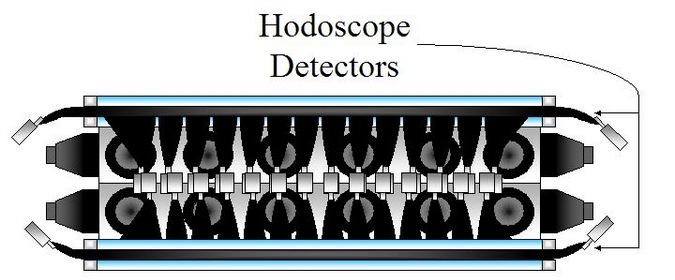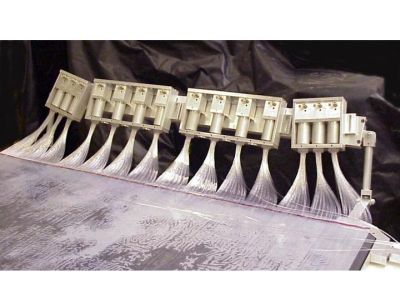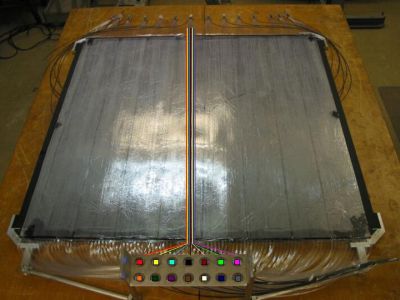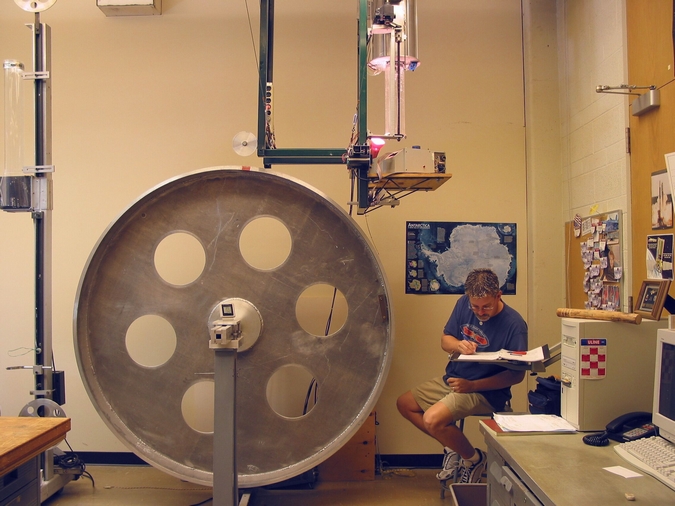|

|
|
The hodoscope detectors in TIGER are
responsible for determining the trajectory of a particle that passes
through the detector. Each hodoscope layer is composed of two
planes of scintillating optical fibers. Each plane contains about
1200 square fibers with 1 mm2 cross-section. At both
ends, these fibers are joined to 14 photomultiplier tubes (PMTs).
As a nucleus enters one plane in the hodoscope, it will cause one or
two fibers to scintillate as it enters. The light emitted is
piped down the fibers to the two PMTs located at each end. A
precise location of entry is given by reading out the signal in these
PMTs. This information is needed to trace the angle that the
particle had upon entry. The greater the angle of incidence, the
more material that the particle traversed during its passage through
TIGER. A particle spending more time in a scintillator or in a
Cherenkov box will give off more energy and tend to look like a larger
or more energetic nucleus. The angle found by the hodoscope
readout system is used to make a sec(θ) correction to
the data. |
|
 |
|
In the TIGER instrument, there are four
planes in each of the two hodoscope detectors, located near the top and
bottom of TIGER. The fibers on the two planes on each of the
hodoscopes run perpendicular to one another in order to identify an x-y
position at the top and bottom of TIGER. On one end of each
plane, there is a coarse readout system (shown in the photograph above)
and a fine readout system (shown at the bottom of the photograph
below). Each one of the 14 PMTs on the coarse end has around 80
fibers attached to its face. On the opposite end of the plane,
these fibers are fanned out to each of the 14 PMTs on the fine side,
such that each PMT has 5 or 6 fibers attached to its face.
Whereas a particle's position can be found to an accuracy of around 8
cm on the coarse side, it can be found to an accuracy of around 6 mm on
the fine side. Using software fitting techniques, this position
resolution can be reduced to around 1.7 mm. |
|
 |
|
|
|
Dana Braun, our Mechanical Technician, drawing fibers
|
|

|



